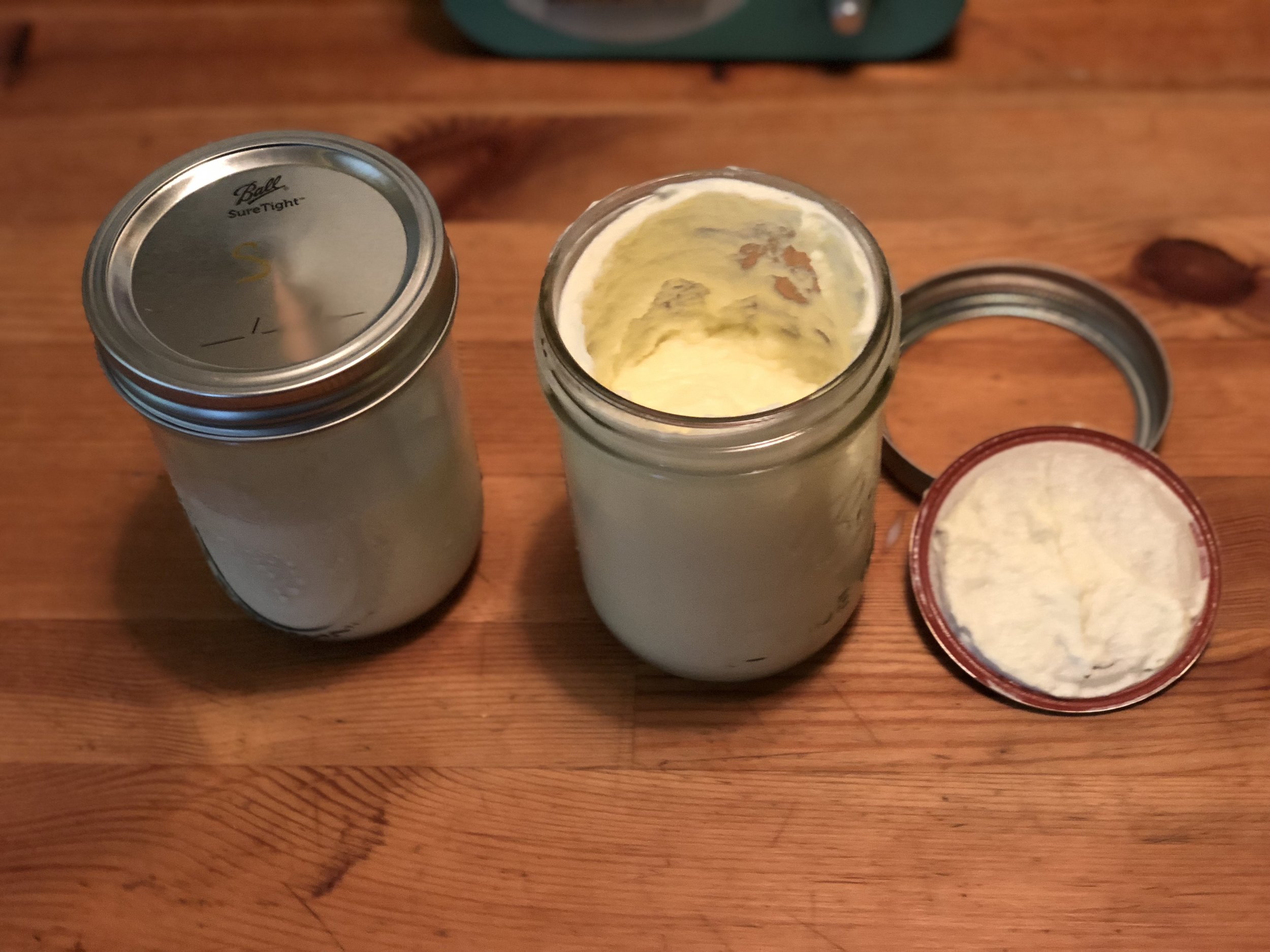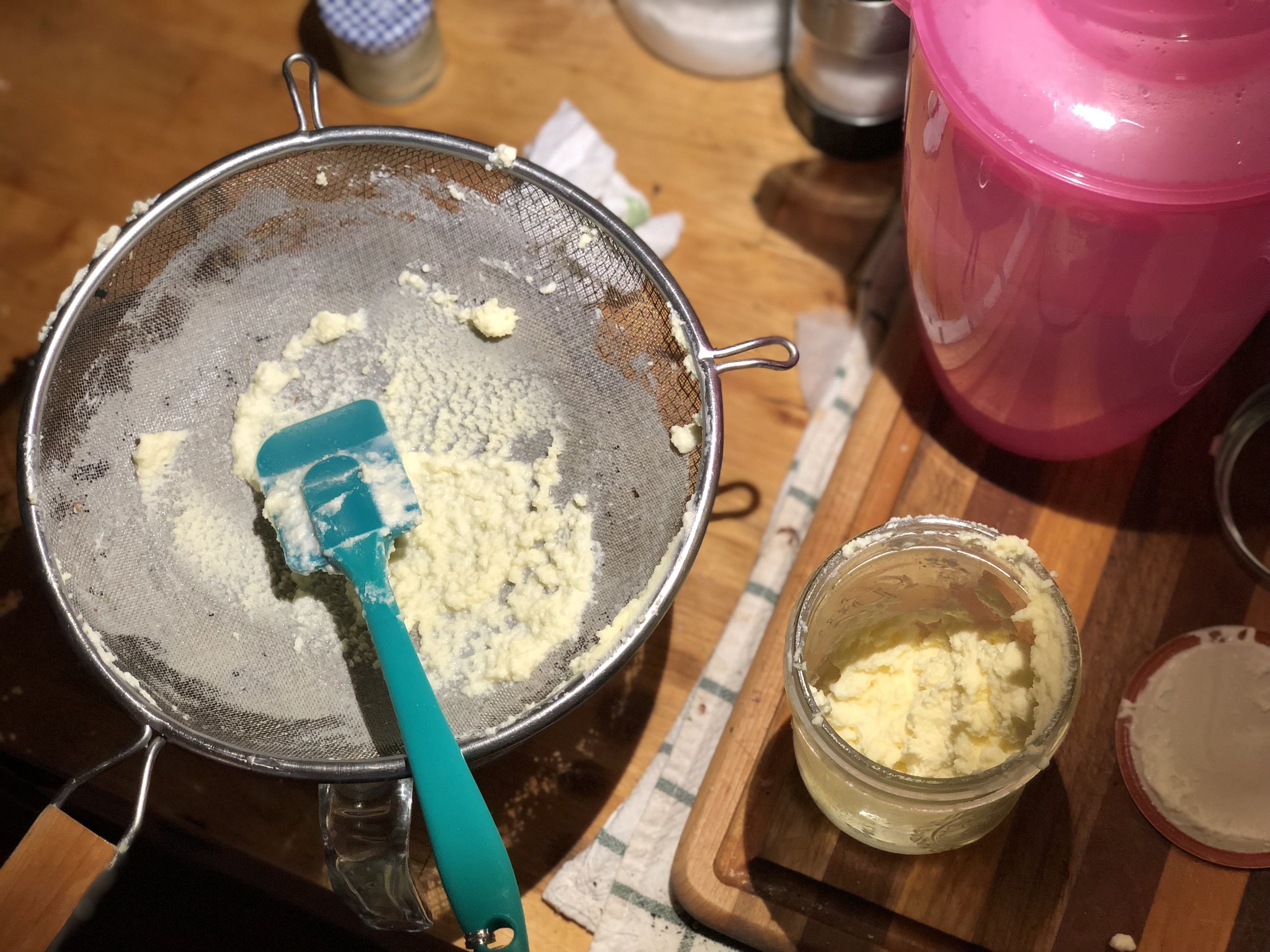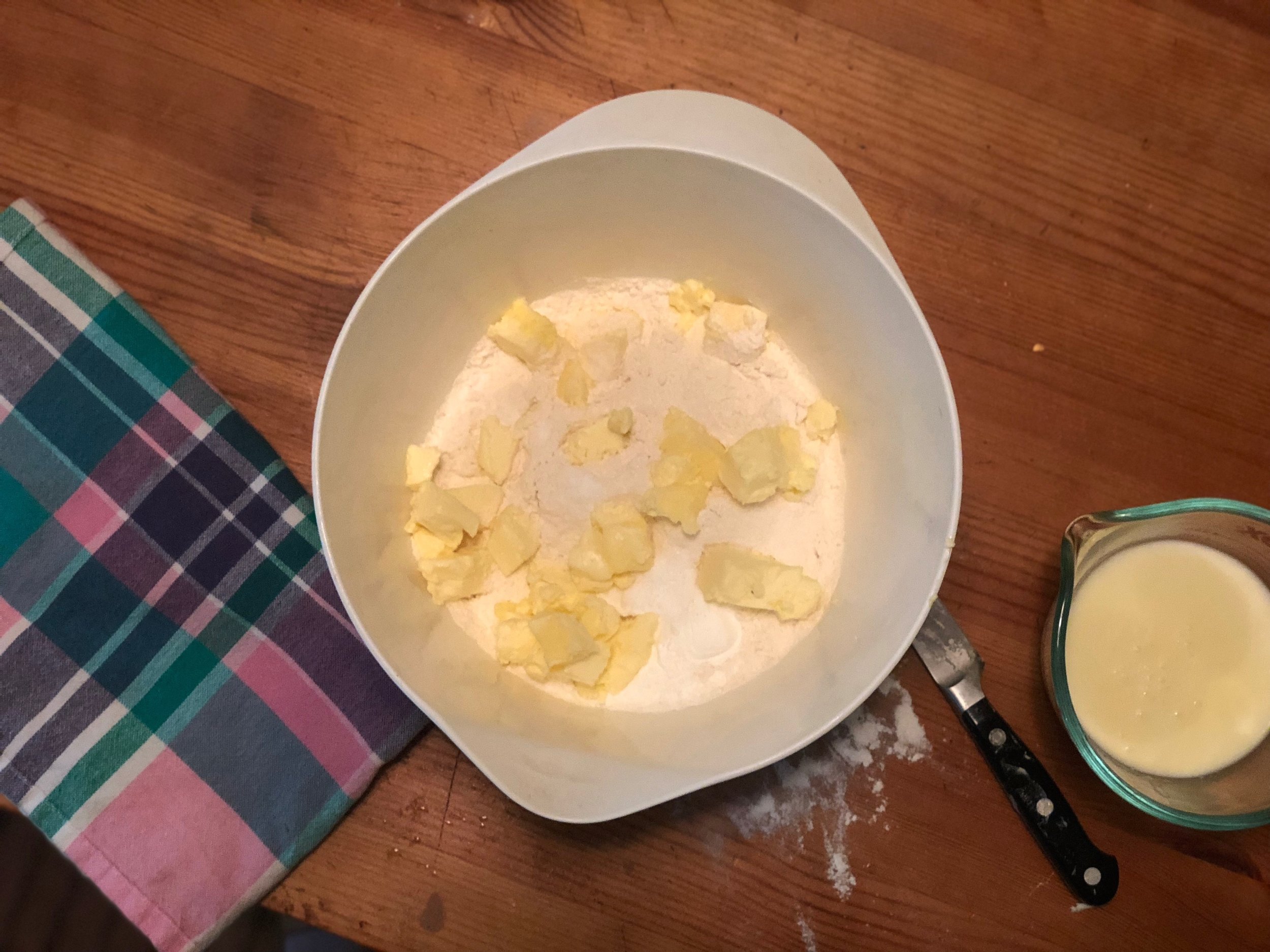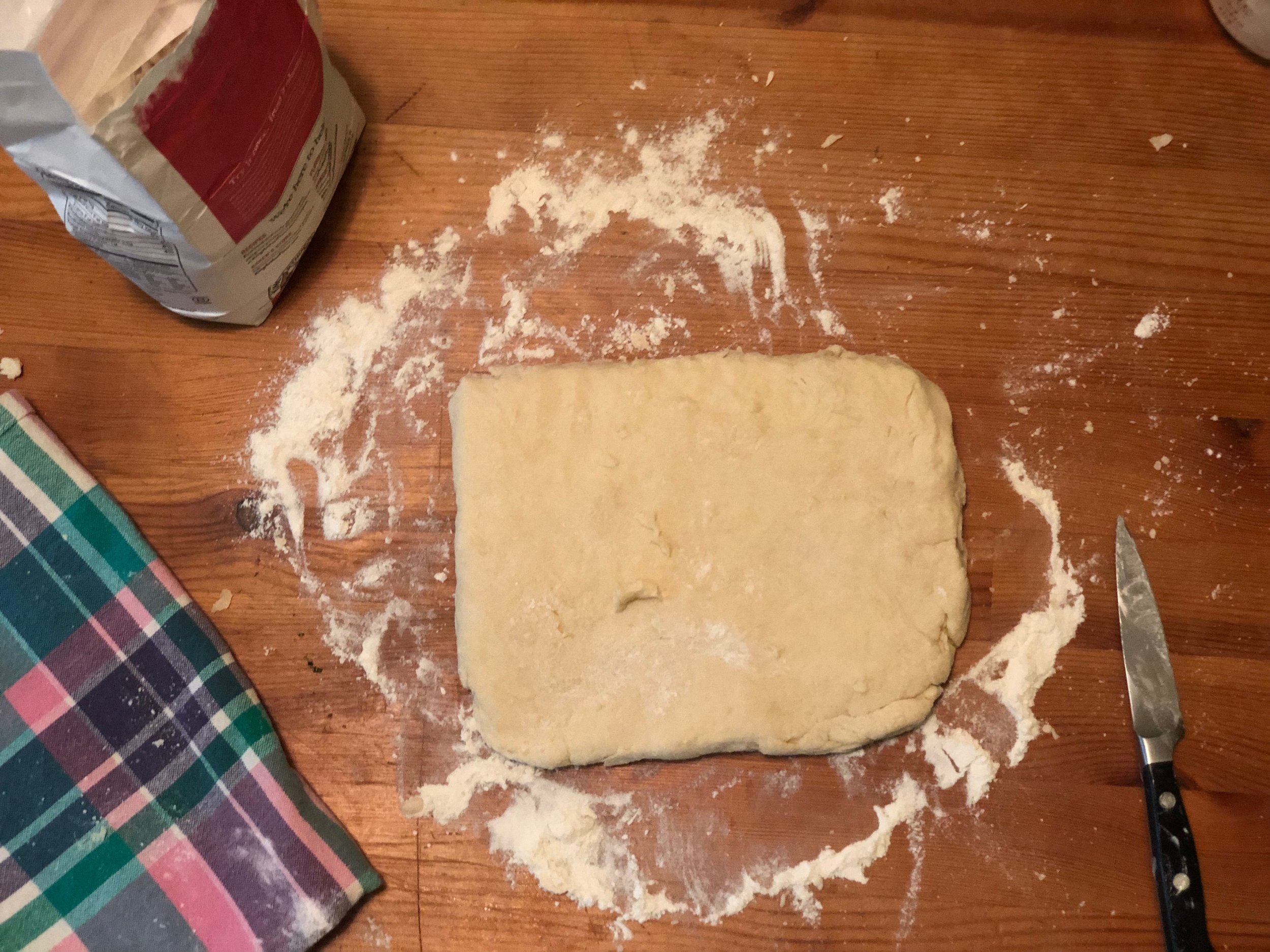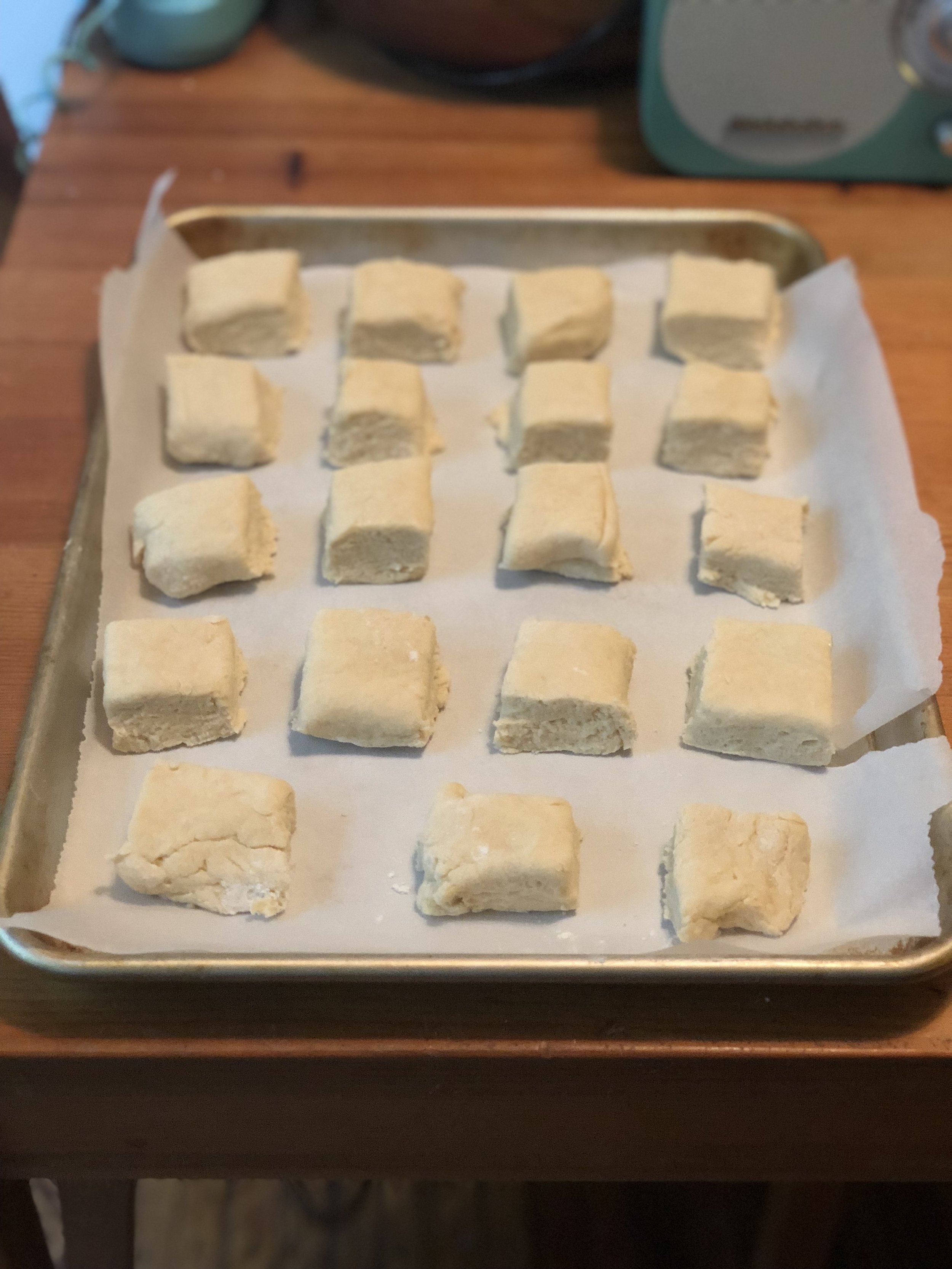In case you missed last week's live show, I did an episode all about one of my favorite things: Butter. The episode was filled with all sorts of fun facts about the history of butter, butter reviews, and a lovely excerpt from Butter: A Rich History. I even dared myself on-air to make butter and use the butter I made, and the extra buttermilk that results in the process, to make biscuits from scratch. So where's the episode, you're wondering? Well, it got lost due to a studio glitch. So now I can either re-record it, or let it pass on into the airwaves and ether. Either way, episode or not, today I did it! I made butter from scratch, and then made biscuits from that butter and buttermilk. It was a very satisfying endeavor!
The process of making butter is alarmingly easy, and doesn't even have to require great arm strength, if that's an issue for you. I got good results from the shaking method and using the blender alike. You could also use a food processor. Now that I've tried it, this is definitely something I want to play around with more in the future! I'd love to try it with different types of local heavy cream, experiment with letting the cream sit out (as recommended by Butter Journal), or even adding a bit of plain yogurt to get the milk to culture.
Yes, it's really as simple as that. Fill a jar halfway with room temperature cream and shake shake shake until you start to see visible separation of the butter solids and the liquid, which will become buttermilk. Yes, it was tricky pushing past the whipped cream phase, but once you get there you'll be rewarded with the freshest, creamiest butter imaginable.
While I was happy with my hand shaken butter, I wanted to see if it would work as well done in my blender. As you can see below, the yield from my first run was quite small, maybe 4 tablespoons worth for about 6 oz. of heavy cream. I think this was due to my not mastering the filtering process of letting the buttermilk drain. When I was done shaking, there was no clear liquid to separate, so I placed my mixture over a sieve and waited. I think I may have strained too much off by moving the butter across the mesh surface, and should have done more rinsing in cold water!
When I put the same cream into the blender, it quickly got into the whipped cream stage. It needed a little poking and prodding to get the cream to properly blend (an air pocket situation happened), but once it did things progressed quickly. Immediately you could see the visible separation of the butter solids from the buttermilk liquid. So in the future, or if you're wary to use a jar, I definitely give the blender/food processor method a big thumbs up! It also worked wonderfully for the cool water rinse. It will seem counter intuative to dump your butter solids back in to the blender with cold water, but trust me, it worked fine!
As you can see above, there was a large clump of butterfat and the buttermilk drained very easily.
On the left we have the butter and buttermilk made in the blender, on the right is the butter and buttermilk from the jar method. The butter from the blender seemed airier and like it could possibly stand to lose more water, but at the same time the denser butter from the jar method was also leaking a bit of water after resting in the fridge.
And finally, for the real challenge! How would this butter and buttermilk hold up when making biscuits? Well the butter (mostly the blender version) folded almost seamlessly into the flour. It felt extremely light and soft, but not at all melty or greasy. I'd never had such an easy time incoorporating butter into flour, to be honest. The buttermilk itself seemed a bit thin, which was worrying, but lo and behold, my biscuits rose perfectly and filled the house with such an incredible buttery aroma while they baked.
The results were very worthwhile and resulted in a biscuit with a cloud like interior that feels as though its melting in your mouth. My only complaint was that they were a little bit bland, but that could be on me for not salting my butter quite enough! I used some fancy french sea salt, which while it's delicious, might not have been the right choice for baking.
In the end, I found this project to be incredibly satisfying. With the blender or food processor it was extremely easy to do, and it would be easy to also scale up the recipe since my blender base is quite large. I will look forward to trying this again, and baking with fresh house made butter to see if it improves any cookies or cakes I might make in the future! There is also the extremely pleasing aspect of using the whole of your ingredients, utilizing both the buttermilk and butter in the same recipe. If you're looking for a fun and near instantly rewarding DIY project, I say give this one a try!
Butter in a jar method from Butter Journal



